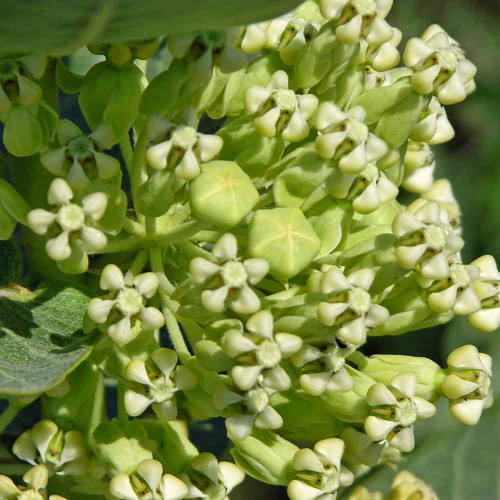Description
Tropical Milkweed "Red Butter" - (Asclepias curassivica)
This non-native milkweed but extremely popular nectar plant for not only monarchs but a wide variety of butterflies, pollinators and hummingbirds blooms over a wide range of time depending on your location.
This milkweed is deer resistant but aphids can be an issue.
This is considered such an important nectar plant for all pollinators that the Arizona Milkweeds for Monarchs decided that it belongs among the offerings of milkweeds. Monarchs love it, in fact many people feel it is monarch candy - monarchs can't resist it. In most parts of the country, native milkweed dies back during the winter months. Tropical milkweed is frost tender and will die back in areas with a hard freeze, so it is grown as an annual in the northern states. But in some areas in the south, A. curassavica can thrive during the winter months. Breeding monarchs will find the milkweed and lay their eggs profusely, often devouring all the leaves, stripping branches bare.
Flowers
Continual flowers spring through fall.
Will These Grow in My Area?
Technically not native to the United States, Tropical Milkweed is widely popular in butterfly gardens. Growing as a naturalized perennial plant in the southern U.S., it can also be easily started from seeds in the northern U.S. and treated as an annual. For an even longer blooming period in colder regions, Tropical Milkweed plants are easily potted up in the fall and grown indoors over the winter.
For further details about Tropical Milkweed and the pro's and con's of adding it to your garden, visit the Southwest Monarch Study.
Pods
Milkweed pods contain a seed floss that is used to stuff pillows or mixed with other fibers to make a cloth. It is used in Life Jackets or as a stuffing material. It is very water repellent. The floss is the mechanism for seed dispersal.
Why This Milkweed is Special
This milkweed seed is the highest quality available anywhere. It is hand-grown across central and northern Arizona, hand-harvested, hand-cleaned, and hand-packed. Over the past five years it has been test-grown in different elevations to verify the vigor and adaptability to different conditions.
Terroir Seeds is proud to be the exclusive partner in offering these unique milkweed seeds to home gardeners. The sale of each packet of milkweed seeds directly supports the continued, on-going research of Arizona Milkweeds for Monarchs organization, a dedicated volunteer citizen science research organization that is overseen by professional scientists from Northern Arizona University.
The milkweed plant (Asclepias spp.) plays a critical role in the monarch life cycle. Each spring Monarchs move across the United States, laying eggs on native milkweed, the only plant that serve as food for newly hatched monarch caterpillars. Arizona has more than 40 species of milkweed - more than 50% of the total diversity of milkweeds in the continental US - giving it the second greatest diversity of milkweeds next to Texas.
Other Names
- Bloodflower
- Mexican Milkweed
- Scarlet Milkweed
- Silkweed
Growing Tip
In the fall when the milkweed pods split open and the seeds are flying out on the breeze, they have a natural germination-inhibiting coating on them so that they don’t sprout too early and die off during the winter.
Moisture and abrasion act on the seed coating to soak and wear it off in nature, allowing moisture into the seed in early spring to start the germination process.
Cold-wet stratification is easy to do at home and significantly increases the germination rate before planting them.
Here’s how to do it – label a sandwich-sized ziplock bag with the name of the milkweed and date, then fill it about 3/4 full with sand, decomposed granite, or another abrasive media. Add enough water to make the sand very wet – you should see the sheen of water when you squish the bag. Add the seeds – however many you want to plant – to the mixture and place the baggie on the top shelf of your fridge, where you can move it a couple of times daily.
This cool, wet, abrasive action mimics a winter in nature while starting the germination process.
Once a month has passed, plant your seeds as usual.
Learn More
- Milkweed Seed Germination Procedures
- Growing Milkweed for the Monarch Butterfly
- Planting A Pollinator Feast
From the soil to the seed to the food you eat - we'll help you grow your best garden!















